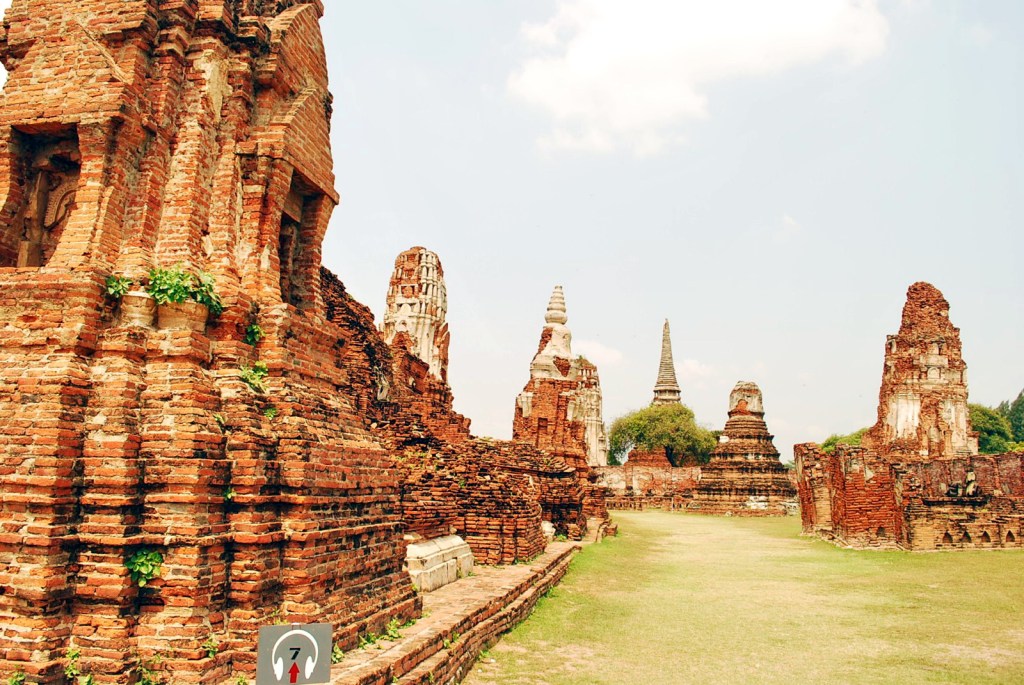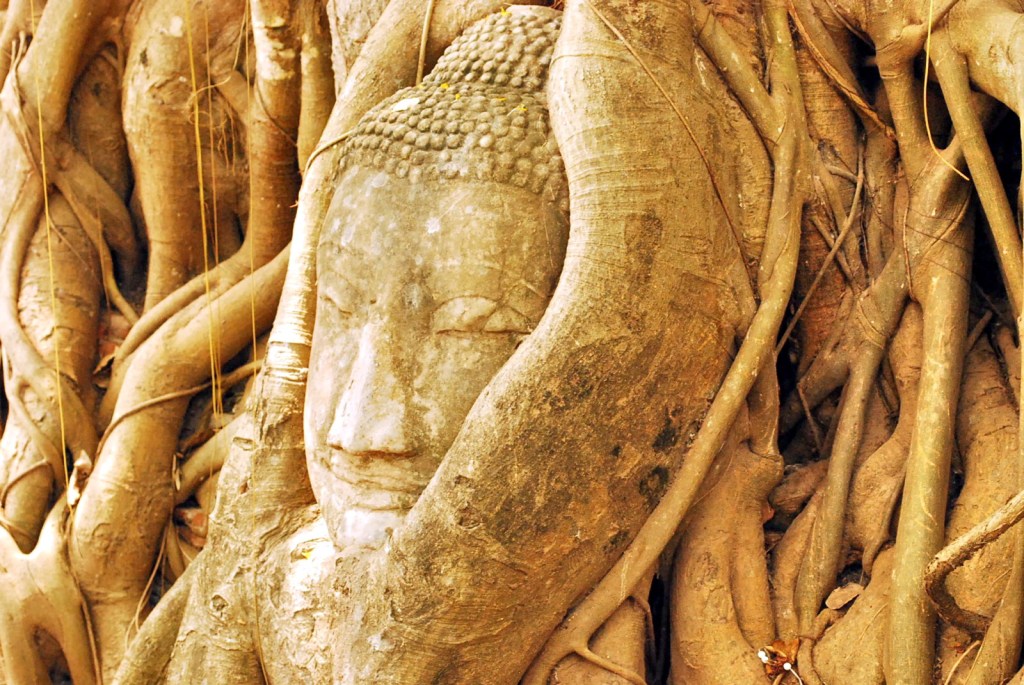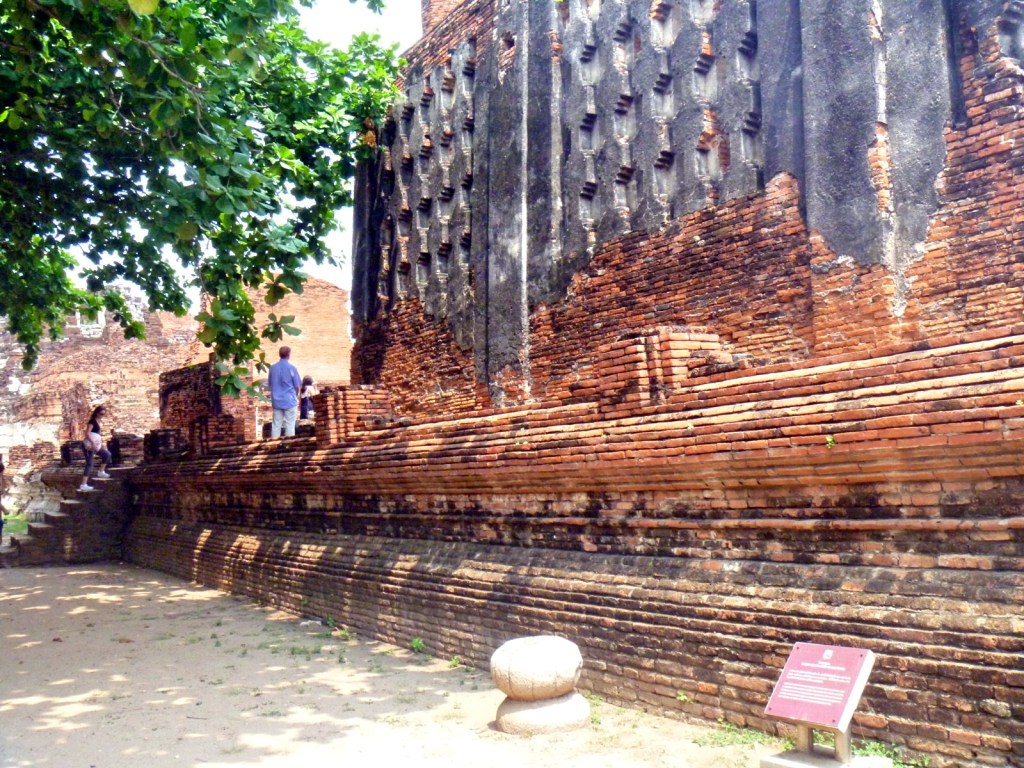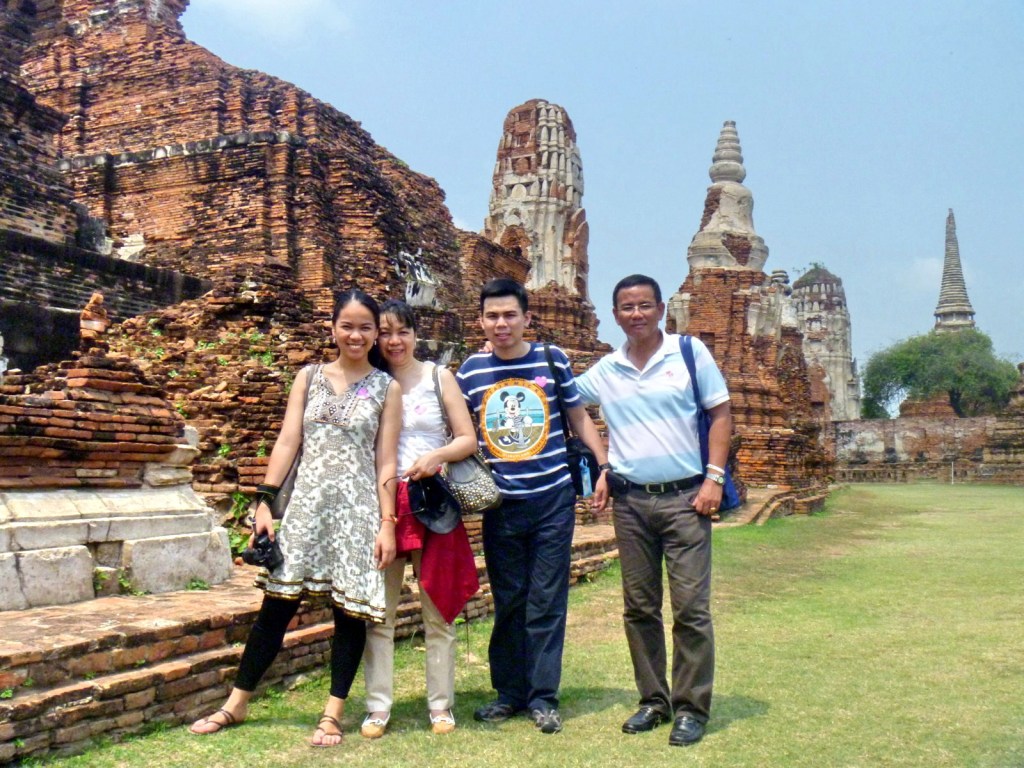From Bang Pa-in Palace, our tourist bus next traveled, 10 kms., to the very heart of the city of Ayutthaya. Here, we dropped off at Wat Mahathat (Temple of the Great Relics) in Ayutthaya World Heritage Historical Park, perhaps the most striking of all of the temples in the city. Wat Mahathat was said to have been built in 1384 by King Rachatirat as a symbolic center to enshrine a relic of the Buddha although others say it was more likely built during the reign of King Boromaraja I (1370-88). The temple was also the residence of the Sangaraja, the Supreme Patriarch or leader of the Kamavasi (City Dwelling) sect of Thai Buddhist monks.
During the fall of Ayutthaya in 1767, Wat Mahathat was set on fire by Burmese invaders. The monastery was restored and remodeled many times in the later Ayutthaya period, until it finally collapsed on May 25, 1904. Only the symmetrical laterite base of the main prang (Khmer-style tower), with staircases on the 4 sides, and some of its upper structure remains. There are rows of headless Buddhas and traces of rows of columns that once supported the roof structure of the verandah that enclosed the chedi.
Scattered around the temple are some important remains of variously-shaped prangs and chedis, in particular an octagonal chedi with a truncated spire in the Ceylonese style. Nearby, the head of a still much-revered statue of the Buddha lies on the ground. The much photographed stone head of one Buddha is entwined in the roots of a Banyan tree. Although only partially restored, the existing ruins are still vast and imposing, giving us an insight into what was once a most important religious center.
As in most architecture of the early period of Ayutthaya, Wat Maha That consisted basically of a large, 46 m. (150 ft. ) high central prang surrounded by 4 subsidiary prangs at the 4 inter-cardinal points, standing on a raised square platform. Around 1625, the top portion of the main central prang collapsed, but was restored and heightened by some 4 m. (13 ft.) in 1633. In 1911, the main prang collapsed again and only the foundation of the main prang remains at present.
East of the main prang is the rectangular, 40 m. by 20 m. Wihan Luang (Royal Assembly Hall), orientated towards Khlong Pratu Khao Pluak. The vihara had a front porch (east) which could be reached by 3 staircases. There was also an entry into the hall from both sides. Behind the main pedestal were two exits leading down to the gallery. The multi-tiered roof of the viharn was supported by 2 rows of columns. The hall contained mural paintings of the Vessantara Jataka. Wihan Luang has undergone several restorations in the past as well as in recent times.
West of the main prang is the rectangular Phra Ubosot (Ordination Hall). The hall had a double entry to the west and two exits on the sides, near the main pedestal which contained the presiding Buddha image. The hall was surrounded by an inner wall called kamphaeng kaew (literally “crystal wall”), forming an inner court which gave access to the, gallery. Outside and around the ubosot were 8 boundary stones or marker slabs (bai sema) at the 8 cardinal points in order to demarcate the sacred area of the Sangkha (Buddhist brotherhood).
In 1956, a secret chamber was uncovered in the ruins; among the treasures found inside were a solid gold lion sitting in a fish-shaped container decorated with a gilded motif and filled with other gold accessories, gold jewelry, a gold casket containing a relic of the Buddha, and fine tableware.
Wat Mahathat: cor. Chikun Road and Naresuan Road, Tha Wasukri sub-district, Ayutthaya, Thailand.







